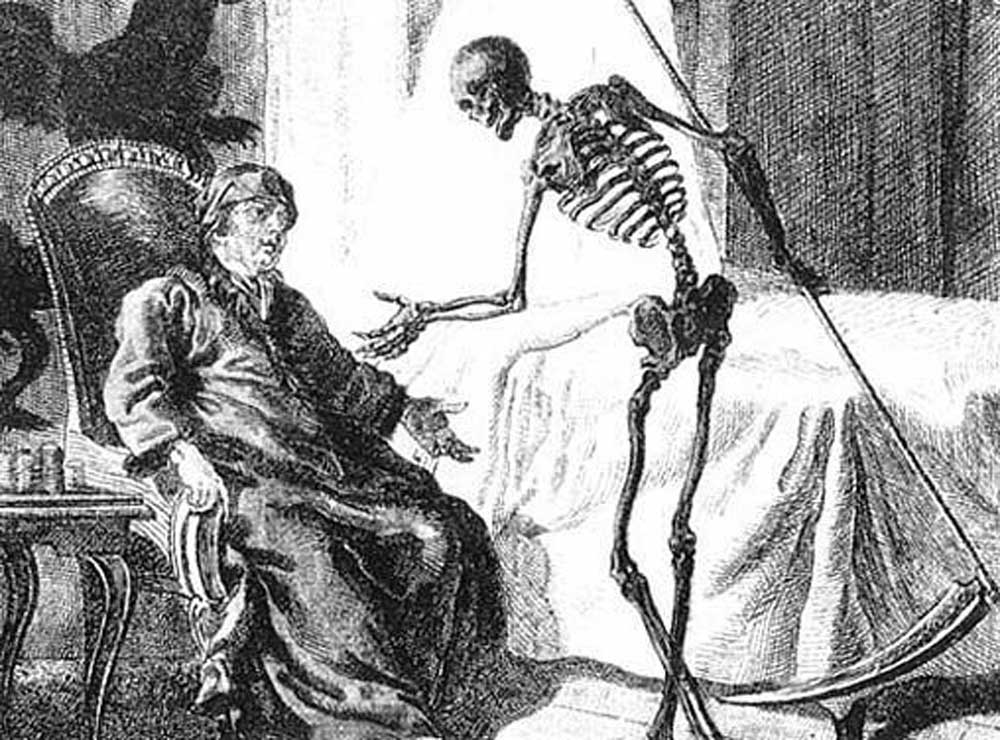Washington state traces death’s footprints within masses of records
Published 5:30 am Friday, January 9, 2015

- Washington state traces death’s footprints within masses of records
PACIFIC COUNTY — In 2013, about 15 Washingtonians died after being hit by vehicles; four died of bites or stings; 856 died as a result of falling, jumping or being pushed, and 15 people died while staying in mental institutions. Of the roughly 50,000 who died that year, more people chose to be cremated than ever before, but 300 unconventional people donated their bodies to science.
Trending
It’s all in the state Department of Health’s “Death Tables,” an in-depth analysis of how, where and when Washingtonians die. The tables, which can be viewed on the DOH website, summarize data from more than 20 years’ worth of death certificates.
For the morbidly curious, the Death Tables contain a wealth of fascinating, if grisly details about dying in the Evergreen State. For example, it’s possible to see which counties have the most deadly car-crashes, the heaviest drinkers. It’s also possible to see who is most likely to die young, how people kill each other, and which substances cause the most accidental poisonings.
For the average citizen, the tables also offer insights about how gender, age, race, location and other factors influence their prospects for a long and healthy life.
Trending
Amy Poel, an epidemiologist with the DOH Department of Vital Statistics, explained in a January phone interview that states have been responsible for collecting birth and death statistics for the federal government for much of the nation’s history. In Washington, DOH staff collect and analyze the information from death certificates (which are stripped of names and other identifying details), and pass the results on to the federal government.
The system probably has its roots in the British Empire’s efforts to identify potential taxpayers, but there are now a host of better reasons to study death data, Poel said the federal Centers for Disease Control and Prevention use this information to track health trends and epidemics, and evaluate the influence of new policies and medical practices. The Social Security Administration uses the information to help keep fraud in check.
“They have an interest in not paying you after you’re dead,” Poel said.
The data also helps state government set priorities and identify potential threats to public health.
First, the good news: Healthier lifestyle choices, improved workplace safety and advances in the medical field have all helped to increase life expectancy in Washington. A child born in 2013 can expect live about three years longer than a child born in 1993. The state’s mortality rate — the number of deaths per every 100,000 people — has dropped every year since 1999.
Now, the bad news: In the end, everyone still dies in the end. By looking at the leading causes of death in each year, researchers have learned that the conditions that kill us are shifting over time. In general, the majority of older people die from disease, while younger people (under age 45) tend to die as a result of what the state calls “unintentional injuries” — falls, fires, drowning, car crashes and other types of accidents.
Since 2004, deaths caused by cancer, strokes, lung disease, heart disease and diabetes have all decreased statewide, while the number of deaths caused by Alzheimer’s, liver disease and suicide all increased slightly.
Age, cultural practices and lifestyle choices can all powerfully affect a person’s health and safety. This means the average age of death, cause of death and the number of people who die each year can vary widely from county to county.
From 2011 to 2013, San Juan County had the lowest mortality rate in the state, with just 5 deaths for every 1,000 people — below the state average of 6.9. But the Death Tables suggest that people who live in Southwest Washington are not so lucky. Pacific County’s mortality rate, 7.8, was sixth-worst in the state, just ahead of Lewis, Cowlitz, Wahkiakum and Grays Harbor counties. (Ferry County in north-central Washington was also in the bottom six.)
People in different regions also tend to be vulnerable to different types of tragedies. In 2013, a disproportionate number of Ferry County residents died in car accidents, while Yakima County residents were about three times more likely to be victims of homicide. And while San Juan residents may have been statistically more likely to live, some of them chose not to — their suicide rate was three times the state average. In Pacific County, the number of alcohol and drug-induced deaths were both well above the state average.
Due in part to the fact that Pacific County is home to a large number of senior citizens, diabetes, heart disease and Alzheimer’s are still prominent causes of death, locally. In 2013, an estimated 28 percent of Pacific County deaths were attributable to heart disease.
With an unusually high number of accidents, Pacific County appears to be a dangerous place for accident-prone people of any age.
In 2013, 12 Pacific County residents died of “Unintentional Injury.” Of those, four perished in crashes, six died of falls, one drowned and one died of an unspecified accident. The number of falls was especially high, compared to the state average, and it doesn’t have much to do with the high number of senior residents. Even when researchers adjust for age, Pacific County residents are still more likely to fall.
During her time working in vital statistics, Poel has seen how the death data can help health professionals identify and respond to emerging problems. For example, several years ago, DOH researchers noticed that when general practice doctors began prescribing narcotic painkillers more liberally, there was a corresponding increase in prescription painkiller overdoses. In response, they created a database that helped doctors prevent over-prescribing and identify drug-seeking behavior in patients, Poel said.
It will take much longer to change some of the patterns in the data. Seeing how many people continue to die of cancer and heart disease can be “overwhelming,” Poel said. And the number of people who die of preventable deaths, especially suicides, still affects her as strongly as it did in the beginning.
“It’s kind of shocking,” Poel said. “When you look at preventable deaths, it just really stands out for me. So many of these are with guns.”









